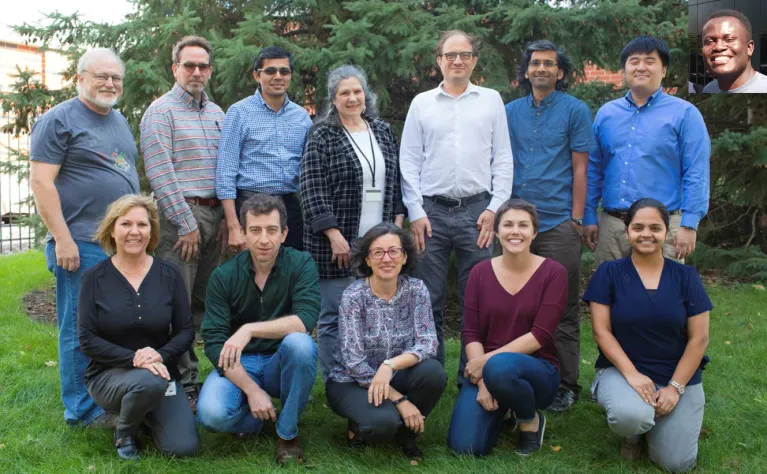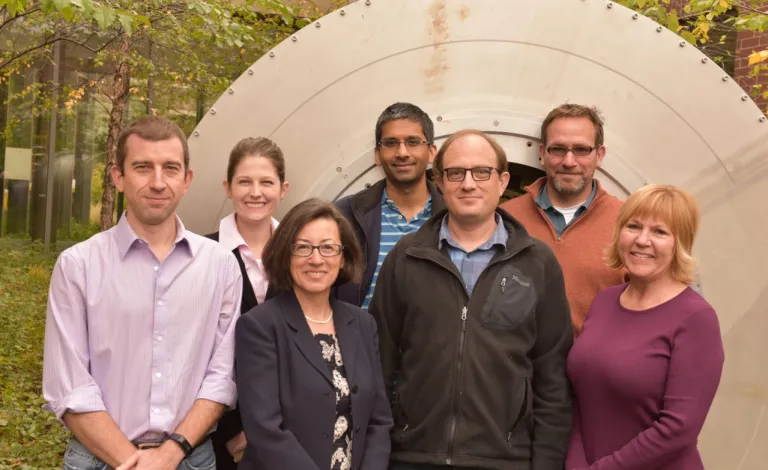Location: University of Minnesota, MN, USA
Year Research Group Founded: 2008
What disease areas do you research?
What models and techniques do you use?
- Mouse models
- Human Participants
- Magnetic Resonance Imaging and Spectroscopy
- Brain Connectivity Mapping
- Computational & biophysical models of diffusion

Research Group Focus
What shared research questions is your group investigating?
We use high field, multi-nuclear magnetic resonance imaging (MRI) and spectroscopy (MRS) to explore how diseases impact the central nervous system. These changes can be structural, functional, biochemical and metabolic alterations. For example, we apply advanced MRI and MRS methods in neurodegenerative diseases and diabetes.
We also lead efforts in research taking place at multiple different cities across the United States and the world. As you can imagine, studies spread out across such a big area require a lot of coordination and standardization. We design robust MRI and MRS methods to be used in clinical settings like these.
Another important question for our team is how early microstructural, chemical and functional changes can be detected in the brain and spinal cord by these advanced MR methods. We are interested in looking at these changes across all stages of disease.
Why does your group do this research?
The methods we use (MRI and MRS) can provide very helpful information to be used in clinical trials. These biomarkers we look at can provide quantitative information about how a disease is progressing or changing.
There is good evidence that subtle changes in the brain can be detected by these advanced MR technologies even before patients start having symptoms. If we better understand the earliest changes that are happening in the brain, this can in turn enable interventions at a very early stage. For example, we could treat people even before brain degeneration starts to take place.
Why did you form a research group connecting multiple labs?
We came together to form the CMRR Ataxia Imaging Team to benefit from our shared and complementary expertise, experience, and personnel. We can do more together than we could apart.
Are you recruiting human participants for research?
Yes, we are! We are looking for participants for multiple different studies. You can learn more about the research we are recruiting for at the following links: READISCA, TRACK-FA, NAF Studies, and FARA Studies. More information is also available through the UMN Ataxia Center.

What Labs Make Up the CMRR Ataxia Imaging Team?
The Oz Lab
Principal Investigator: Dr. Gulin Oz
Year Founded: 2006
Our focus is on MR spectroscopy, specifically neurochemistry and metabolism studies. We focus on spinocerebellar ataxias. Also, we have been leading MRS technology harmonization across different sites and vendors.
The Henry Lab
Principal Investigator: Dr. Pierre-Gilles Henry
Year Founded: 2006
We develop advanced methods for MR spectroscopy and motion correction. Then apply these new methods to the study of biochemistry and metabolism in the brain and spinal cord in various diseases. We have been working on ataxias since 2014.
Fun Fact about the Henry Lab: The French language can often be heard in discussions in our lab!
The Lenglet Lab
Principal Investigator: Dr. Christophe Lenglet
Year Founded: 2011
We develop mathematical and computational strategies for human brain and spinal cord connectivity mapping. We do this using high field MRI. Our research aims at better understanding the central nervous system anatomical and functional connectivity. We are especially interested in looking at this in the context of neurological and neurodegenerative diseases.
Fun Fact
Members of our team have their roots in 7 countries (US, Turkey, France, India, Mauritius, South Korea, Ghana) and 4 continents (North America, Europe, Asia, Africa)
For More Information, check out the Center for Magnetic Resonance Research (CMRR) Website!
Written by Dr. Gulin Oz, Dr. Pierre-Gilles Henry, and Dr. Christophe Lenglet, Edited by Celeste Suart










